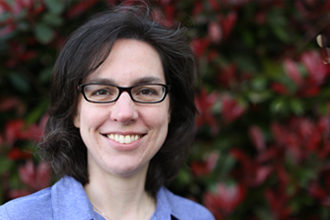Center for Instructional
Innovation and Assessment
INNOVATIVE TEACHING SHOWCASE
2015-16
Institutional Goals
Listed below are selected learning outcomes in the area of critical thinking that Western Washington University is actively integrating into its curriculum. Each learning outcome is listed with its definition, along with a description of how Stephanie Treneer's teaching strategies meet each of these student learning outcome goals.
Critical Thinking
| Learning Outcomes | Definition | Course Outcomes |
| Identification | Accurately identifies and interprets evidence. | Students investigate properties of the integers and make conjectures about general patterns. |
| Alternative Consideration | Considers major alternative points of view. | Different students may draw contradictory conclusions from their observations. This provides an opportunity for class discussion. |
| Accurate Conclusions | Draws warranted, judicious, non-fallacious conclusions. | Through peer discussion, accurate conclusions are reached. |
| Justification | Justifies key results and procedures, and explains assumptions and reasons. | Students write proofs to justify their conclusions. |
Source: Adapted from the California Academic Press's Holistic Critical Thinking Scoring Rubric.
Writing
| Learning Outcomes | Definition | Course Outcomes |
| Rhetorical Knowledge | Focuses on a clear rhetorical purpose and responds appropriately to the needs of varied audiences and situations. | One of the main goals of the course is for students to gain competency in writing mathematical proofs. These are logical arguments based on an understanding and analysis of already established facts. Students learn the conventions of style and form that are generally accepted in mathematical writing. They write their arguments with a level of detail suitable for their intended audience, peers with a similar level of mathematical maturity. Through the presentation and discussion of proofs, they revise their work for a final version which is made available to the whole class. |
| Critical Analysis | Develops, examines, situates, and communicates a reasoned perspective clearly to others. | |
| Composing Process | Understands writing as a recursive process that involves drafting, re-thinking, editing, reconceptualizing. | |
| Convention Knowledge | Uses appropriate conventions for documentation and for surface features such as syntax, grammar, usage, punctuation, and spelling. |
Source: Adapted from Western Washington University's Learning Outcomes for Writing Proficiency.
Quantitative Reasoning
| Learning Outcomes | Definition | Course Outcomes |
| Mathematical Information | Represent mathematical information symbolically, visually, numerically, and verbally. | Students gain competency in using the definitions and main results about divisibility of integers to solve related problems. They study patterns in the integers and draw inferences from them. They check their hypotheses against further examples to refine their conclusions. Students communicate mathematics effectively and accurately, both verbally through proof presentations and informal discussions, and in their written proofs. |
| Mathematical Methods | Use arithmetical, algebraic, geometric, and statistical methods to solve problems. | |
| Mathematical Models | Interpret mathematical models such as formulas, graphs, tables, and schematics, and draw inferences from them. | |
| Estimate and Check | Estimate and check answers to mathematical problems in order to determine reasonableness, identify alternatives, and select optimal results. | |
| Mathematical and Statistical Limits | Recognize that mathematical and statistical methods have limits. |
Source: Based on the Matematical Association of America's quantitative literacy requirements for all students who receive a bachelor's degree.



